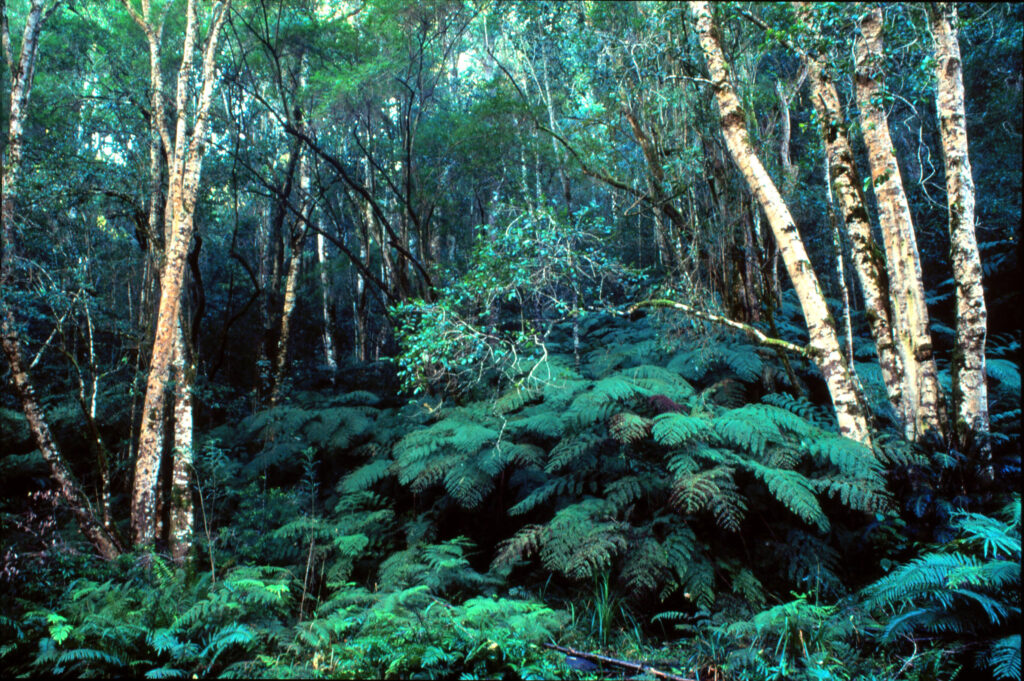The Wilderness Within By Steve Hurt
This morning, I walked a winding trail inside a dense coastal forest. I am fortunate to live right here, so near to this primal natural world, to feel the wildness of nature so close at all times. This place is sacred, it is a verdant unfolding of dappled greenery nestled alongside a narrow stretch of coastline that is home to some of the last remaining primary indigenous forests of South Africa. These forests provide safe retreats for the abundant biodiversity protected by our national parks. Here, you might find the spoor of a leopard and hear stories of the rare sighting of forest elephants. The birdlife is extraordinary, almost deafening at dawn. In this wilderness, one feels the touch of primeval earth, the cradle to the heartbeat of ancient life.
The pulse of this forest ushers me into a familiar place inside, where there is a deeper recognition of my own inner wildness. In recognising our shared wildness, there is a remembrance that we are both made of the same fabric of consciousness. There is a deep kinship with the forest and all living things in this landscape, punctuated by trees, mountains, rivers and creatures big and small. These woods are soaked in our shared soul, woven throughout everything before me. This kinship always brings me back to love — a deep love for the earth and all living things, a sense of connection to everything that I hold dear in this living world. It is also here in these delicately woven natural spaces that I sense how the forest is like a clear mind holding an original vision of creation. I love how this place is filled with potency and presence. I love the tryst between its fragility and resilience. I love how the forest breathes and then leaves me with the pulsating presence of a pregnant stillness between its breaths. The forest embodies wholeness, connectedness and presence and a burning heart turned by the fingers of God.
And yet, even though this place is pure wilderness and a place of deep connection, I cannot walk here without a vivid sense of what has been lost. I am surrounded by utter beauty but I feel such a deep missing.
In the forest are the echoes of absent voices; there is a hollow imprint of wild animals that once were part of the fabric of this place. Even in the fullness of this avian orchestra, there is a chorus of emptiness, a palpable void of silence that speaks of what was once here; songs filled with the silent ululations of the missing choir members. Only 200 years ago, this land was an undulating coastal forest, a labyrinthine mass of towering trees. Giant yellowwoods, some up to 1 000 years old, punctuated every part of this canopy, perfecting the architecture of a dense understorey. Not long ago, the uncharted forest floor stretched for hundreds of kilometres, spilling over into vast thickets and rolling hills. Thousands of antelope ventured out from the thick forest to graze, then disappeared back into this deep green sanctuary of wildness. The Knysna forest elephants once flourished here. But the arrival of the woodcutter and the hunter irrevocably changed this landscape. They set up camps, the trees fell to their axes and roads were forged through the heart of the forest. And within a heartbeat, the woodcutters’ camps turned into suburbs and their dirt roads into highways, reaching ever deeper into an ever-growing spillage of urbanisation and suburbia.
What man wants, he takes. And if there is an insatiable need to forge a path into the sacred heart of the wilderness, then that path will be made. And in the dust of this path, there is the distinct smell of all the friends of this vast wilderness who are now absent. Their absence now fills the world. We lose our kinship with nature when we destroy it. The relationship turns sour; the bitter aftertaste of desecration lingers insidiously. We suffer the desecration inside ourselves and in the outer world because we are actually one and the same being. We are but the earth looking back upon herself.
As humanity encroaches ever forward upon the edge of the wilderness, not only does the footprint of the forest diminish, but the essence of this living being recedes more into her sacred core. There is an essential presence in this untouched wildness that cannot bear the face of man, tarnished by his naming and claiming. And so this wildness perambulates back into herself, withdraws her presence in this physical world. She coils herself into the inner sanctum of her wild heart and fades from the spaces that materialistic man seeks to claim, protecting a sanctuary that his gaze cannot pierce. This withdrawal into herself is a safeguarding of what remains behind, a careful cushioning of the inner essence of her wild heart.
She is the greatest of lovers and every retraction of her heart shatters the heart of her lovers. We live in the agony of her absence, not knowing why or how we suffer this deep longing for something we inherently know is missing but cannot place. It is this ecologically lovestruck heart that fuels the cry of our souls in the night, this longing for that which is absent, which we know should be here but no longer have the words or memories to describe. That is an ache that the forest carries. That is the ache present in this cathedral of greenery with its myriad singing voices of creatures great and small.
Whilst walking along the sun-dappled path and feeling this deep missing and longing for the return of the wildness, I was touched by the life of the smallest of creatures in this forest: The humble spider. It was as though the spider, the smallest and most delicate of creatures, was telling me a story now. It was a story about the ephemeral nature of life, resilience and love.
I had been cognisant of how my lumbering strides were tearing apart the spaces between the trees that had been woven shut overnight by the shiny, silky threads of the spiders. The forest is filled with these gossamer threads, near-invisible lines cast across the path. Each thread is painstakingly crafted across the spaces between trees filling the open spaces and I cannot walk without tearing them down. I am reminded that all creatures great and small are equally valued, from the ancient forest soil strata below me with their billion microorganisms to the towering yellowwood architects of this canopy. And, while the forest is so often a story of the trees that grow to be a thousand years old and the wild animals that inhabit this space, paradoxically, the spider’s story is one of impermanence. The life of these spiders is fleeting, yet their presence is continuous and their labour consistent. They inhabit this dynamic space in creation where their world of webs is made anew again each night and day. As I walk I watch this story unfold in my mind’s eye and it dawns on me that these webs are both temporal creations that last only a few hours but are also the very silky fabric of a family lineage that stretches back millions of years. These spiders have always woven their threads and will continue doing so forever. They will never retreat, will not stop this relentless pursuit of being embedded in their God-given territory, and this resilience is the signifier of a wild heart that is simply true to itself without compromise. It is a beautiful testament to the power of the heart, the power of being embedded in one’s true nature where there is no possibility of being anything other than what you are.
I see parallels between our lives and those of spiders, a deep kinship woven into our shared soul. It feels as though, much like the spiders’ webs torn down daily by passers-by, we too face a similar fate: Our culture has ceased to respect the ancient forests of mystical wisdom and the intricate webs we’ve meticulously crafted through our spiritual practices that nurture love and connection in this world. These gossamer threads, spun from our hearts, are the narratives we create by living true to the soul’s deeper reality. They are stories of our hearts, interwoven into the fabric of this world, brought forth with the silk of our spirits. Like the spider webs strung across the path, the love we weave into the world holds no guarantee of permanence. Yet, we can draw lessons from paying attention to the earth and her expressions of love. Nature, embodied here by a spider, persists in living from a place of profound love — unwavering love for all of creation. This deep, true love, undeterred by challenges, emanates from its very essence and purpose. Nature embodies love incarnate. Mother Nature continues, unabated, to love and give herself freely to all life, completely surrendered to her heart, which is steered by the Great Spirit — the thread that unites us all.
Eventually, I reach a bench on top of the peak. I sit down and stare across the most breath-taking landscape, looking out over the national parks onto the lakes of Wilderness below. From this perch I can hear all the birds of the forest below me and their song is a conduit to love’s secret hiding place. These are the moments I cherish. I catch my breath and relax into a waking meditation, counting my breaths and drawing my attention into my heart. I feel the need simply to acknowledge how deeply in love with this place I am. My heart is swollen with awe and reverence for this beautiful forest and it cascades into a love that opens it even wider, stretching it, pulling me deeper into love. Opened like a rose, petals unfurling from this bud, soaked in the dawn of love. Love dawns inside and my heart is a waiting rosebud, surrendered open.
In this moment of falling in love with the Earth I invite Her to find a home inside my heart and offer my life work to be surrendered to Her needs. But what is more, for the first time ever, I am conscious of a deeper surrendering in my heart to allow myself to be loved and held in return by the Earth herself.
Dawn birdsong, soft heart
This is Love and I am yours
My heart enraptured.



